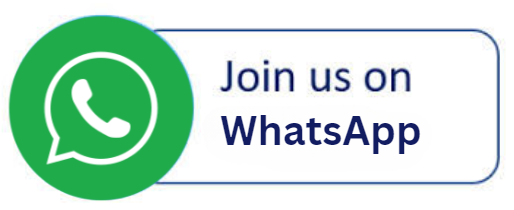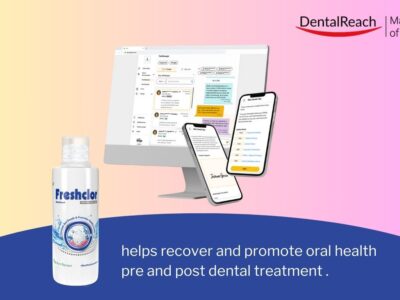The shift to digital recordkeeping and telehealth in dentistry brings both convenience and new responsibilities. In India, patient information – from paper charts to electronic health records (EHR), photographs, and communications on WhatsApp or email – is protected by a combination of law and professional ethics. This article reviews key regulations and practical guidelines to help Indian dentists stay compliant when managing physical and digital patient records.
Dentists must now navigate the
- Information Technology Act, 2000 (and its rules)
- new Digital Personal Data Protection Act, 2023 (DPDP Act) and
- professional codes like the Dentists (Code of Ethics) Regulations.
Together, these require secure handling of patient data, obtaining proper consent, and guarding against breaches.
Legal Framework: IT Act and Data Protection Law
IT Act, 2000: The IT Act provides the basic cyber-law framework. It criminalizes unauthorized disclosure of personal data.
- Section 72 punishes anyone who, having secured access to an electronic record without consent, discloses it to others – up to 2 years jail or ₹1 lakh fine[1].
- Section 72A extends this: if a person (including an intermediary or software provider) discloses personal data obtained in the course of a contract (e.g. EHR software vendor mishandles data) with intent to harm, the penalty is up to 3 years jail or ₹5 lakh fine[2].
- Section 43A imposes liability on any “body corporate” (e.g. a clinic or software company) that negligently fails to implement “reasonable security practices” for sensitive personal data (which includes medical records) and causes wrongful loss[3]. In practice, this means clinics and tech vendors must adopt standard safeguards (encryption, access controls, backups) or face compensation claims.
- Finally, Section 66E forbids non-consensual capture or transmission of a person’s “private area” image – an egregious breach of privacy[4]. (While dental intraoral photos usually don’t show “private areas” as defined, the spirit is that any clinical image shared without permission is likely unethical and possibly illegal.)
Privacy and Data Protection: The Supreme Court declared the right to privacy a fundamental right under Article 21 (Puttaswamy case, 2017)[5]. Building on that, India enacted the DPDP Act in 2023. This new law governs digital personal data (i.e. any identifiable personal data in digital form). Though rules are still being notified, key principles are clear: data must be processed lawfully, limited to specified purposes, collected only if needed, kept accurate, and not stored longer than necessary[6].
Dentists as data fiduciaries (e.g. clinics or software providers) now have a statutory duty to obtain proper consent, secure patient data (especially health data deemed “sensitive”), notify any breaches, and delete data once its purpose is over or consent withdrawn[7]
Professional and Ethical Duties
Dentists’ Code of Ethics: Professional guidelines reinforce the legal duties. The Dental Council of India’s code of ethics (as reflected in Indian Dental Association guidance) emphasizes confidentiality as a core obligation. Patient confidences “entrusted by patients … should never be revealed unless required by law”[8]. Dentists must keep patient records (medical/dental history, diagnoses, images, treatment notes) accurate and complete, releasing them only to the patient or other dentists on the patient’s request[9]. Critically, the code forbids tampering or falsifying records [10]. In plain terms: do not share patient data for any purpose unless the patient clearly allows it.
Telemedicine Guidelines: Teledentistry is covered under India’s Telemedicine Practice Guidelines (2020) for Registered Medical Practitioners (RMP). These embed the same ethical norms: dentists must “safeguard patient privacy and confidentiality” even when using technology[11]. Misusing patient images or data in teleconsults (e.g. posting them online without permission) is specifically listed as professional misconduct[12]. The guidelines also mandate that records of teleconsultations – including prescriptions and advice given – be maintained just as for in-person visits[13].
Thus, virtual consults do not relax any privacy duties: consent, documentation, and confidentiality requirements still apply.
Consent for Data Sharing
Informed Consent: Any patient data shared beyond immediate treatment usually requires consent. For routine care, consent is implied for sharing info with labs, specialists, or insurance (within professional necessity). But non-treatment uses – case discussions, education, marketing – demand explicit informed consent. For example, before posting a photo on social media, dentists should obtain a written consent form clearly explaining the purpose and audience[14]. Best practice (per international guidance) is to discuss with the patient:
- why the image is needed
- how and where it will be used,
- who will see it,
- whether it will be shared further,
- if their identity will be hidden, and
- how it will be stored[14].
Only proceed if the patient (or parent/guardian for minors) freely agrees.
Digital Consent: Digital or e-signatures are legally valid under the IT Act. Many clinics now use tablets or patient portals for consent forms. Ensure these e-forms are securely collected and stored. If using teleconsultation, note that implied consent applies when a patient initiates the call; but if the dentist themselves contacts a patient to consult, explicit consent must be recorded (for example, via an email or text stating the patient agrees to proceed)[15].
Similarly, if a patient or carer sends clinical information or images over WhatsApp or email, document their consent (e.g. reply “I consent to share this info”). Always log such consent in the patient’s file.
Record Storage and Retention
Secure Storage: Both paper and electronic records must be kept under strict security. Paper charts or printed X-rays should be locked in a cupboard or room accessible only to authorized staff. Digital records (EHR software, scanned documents, photos) must be on password-protected devices; ideally encrypted and backed up. Use audit logs or user accounts so that every staff member (dentist, assistant, receptionist) has a unique login. Do not let staff copy patient files onto personal devices or share them in unsecured ways. If using cloud storage or third-party EHR vendors, verify they maintain industry-standard security (e.g. ISO 27001 certification).
Remember, if a cloud vendor is negligent, your clinic can still be held liable under Section 43A[3].
Retention and Disposal: Indian law gives no single rule for how long dentists must keep records. The Medical Council of India guidelines (applicable to doctors) suggest retaining inpatient records for at least 3 years[16]. However, many experts recommend longer retention for dental records (often 7–10 years) due to latent issues and medicolegal cases[16]. A practical approach is: keep general patient records for 5–10 years, and keep records of minors until they reach adulthood plus a few years. Medicolegal cases (e.g. assault, forensic cases) should be kept at least 15 years[17]. Ultimately, if space allows, indefinite digital archiving (with secure backups) is safest.
When records reach end of life, dispose of them securely. Shred paper charts and X-rays, and overwrite or destroy digital files so they cannot be recovered. This prevents anyone from reconstructing old patient details.
Technology and Teleconsultations
WhatsApp and Email Consults: Informal use of messaging is common but risky. WhatsApp has end-to-end encryption, but messages still reside on phones and backups. If a patient sends a sensitive photo or details by WhatsApp, treat it as part of the record: save it to the clinic’s secure system if needed, and then delete it from the phone. Always get consent for tele-advice: a simple text stating “I give consent to receive advice on WhatsApp” is prudent.
Avoid transmitting patient info via unsecured email, which can be intercepted. If email must be used, consider encrypting attachments. When consulting via chat or video, use a private room; don’t have third parties overhear or see screens.
Third-Party Software (EHR/Cloud): Many clinics subscribe to dental practice management software or use cloud photo storage. Before adopting, check their privacy policy. Make sure the vendor will not access or exploit patient data, and ask if they keep data within India (as foreign storage may raise jurisdictional issues). Look for vendor compliance with Indian/ international data laws. For example, some cloud providers offer business associate agreements that guarantee confidentiality. Remember, as the dentist, you remain responsible for your patients’ data even if a vendor is involved (per Sections 72A and 43A).
Digital Consent Forms and Portals: Modern clinics use tablet kiosks or apps for patient registration and consent. These must be treated as part of the health record. Ensure the digital forms are stored securely (encrypted database) and cannot be accessed by unauthorized staff. It’s wise to sync them to your main EHR so they’re backed up and retrievable.
Common Scenarios & Dilemmas
Social Media Photo: Scenario: Dr. Sharma posts a before/after case on Instagram. The patient signed a photo-release form, but forgot that their face/ID tag is visible.
Issue: Consent covers use, but identity exposure was overlooked. Even with consent, sharing identifiable images on social media can breach privacy. Best practice: crop out faces or use only extraoral views, or use a heavy anonymization (black bars). If any doubt, don’t post. Indian guidelines lack specific rules on dental photos[18], so default to the principle of confidentiality[8]. Always get explicit, specific consent for any public use[18] and review posts for inadvertent personal identifiers.
WhatsApp Consultation: Scenario: A patient sends a photo of a painful tooth on WhatsApp and asks for advice. Issue: Informal consult via WhatsApp is convenient but poses privacy questions. Under Telemedicine Guidelines, if the patient initiated, consent is implied[15]. Nevertheless, document the consult: note time, date, patient ID, and advice given. Advise the patient in writing (on app or text) that advice via WhatsApp is for preliminary guidance only, and encourage an in-person visit for definitive care. Ensure your device is locked and messages aren’t shared; after logging the consult, delete the photo from your phone and save it to the secure clinic record system, then remove it from the chat history.
Digital Consent Forms: Scenario: A dental clinic uses an online form for patients to consent to treatment. A patient disputes a charge, claiming they never consented.
Issue: In electronic form, there must be a clear audit trail (timestamp, patient login). Under the IT Act, electronic signatures (including OTP or Aadhaar e-sign) are valid. To avoid disputes, use a system where patients click “I agree” with a copy of the form emailed to them. Keep that signed copy in your records. Train staff to explain each form to the patient before signing. Legally, digital consent is fine, but avoid “lazy” consent (don’t just mail forms expecting patients to know what they signed).
EHR Access by Staff: Scenario: The clinic receptionist can view all patient charts in the EHR software, including confidential notes. Issue: The dentist’s staff also has a duty of confidentiality. Limit access in the software: ideally, staff should only see administrative info (appointments, billing). Technical safeguards (role-based logins) can enforce this. Administratively, have all staff sign a confidentiality agreement. The code of ethics notes that not just dentists, but every member of the dental team must protect patient information[19]. If an assistant must enter clinical data, they should only handle the minimum necessary. Monitoring access logs can deter misuse.
Data Breach Risk: Scenario: A laptop containing patient records is stolen from the clinic.
Issue: If data was not encrypted, this is a serious breach. Under Section 43A, the clinic could face compensation claims if seen as negligent[3]. With the DPDP Act coming into force, you would also be required to notify the Data Protection Board and affected patients about the breach. To prevent this, always encrypt laptops and smartphones. Use full-disk encryption and strong passwords. Keep devices locked and never leave records unattended in public areas.
Safeguards and Best Practices
- Follow “Privacy by Design”: When adopting any tech (software, cloud, telehealth), plan for privacy from the start. Ensure systems have user authentication, role controls, and auto-logout.
- Obtain Explicit Patient Consent: Especially for uses like social media, photography, research or marketing. Explain in simple language what data is used and why, then document consent.
- Staff Training: Regularly train your team on confidentiality rules. Remind them that even casual talk about patients (e.g. to family) is forbidden. Display reminders in staff areas.
- Technical Security: Update antivirus software, use secure Wi-Fi (protected by WPA2/WPA3), and change default passwords on devices. Consider two-factor authentication for cloud accounts.
- Data Minimization: Collect only the data you need. Don’t store extra copies of records outside the official system (e.g. avoid emailing reports to yourself).
- Records Auditing: Periodically review who has accessed records. This can uncover unauthorized snooping.
- Policy Documentation: Even if small, have a written privacy policy (for staff and patients) outlining how you protect data. This helps in court or regulatory inspections to show you took data protection seriously.
Dentists might also consider appointing a “privacy officer” (even informally) to oversee these tasks.
Conclusion
In the digital age, Indian dentists face both ethical imperatives and growing legal expectations to protect patient data. Key steps include always obtaining informed consent before sharing any patient information, securing digital records with strong technical measures, limiting access to authorized persons, and keeping data only as long as needed. In ambiguous areas (like social media sharing), dentists should lean on the principle of “what would you do for a family member?”[20] and err on the side of privacy. With HIPAA-style regulations yet to arrive in India, it’s up to each practitioner to self-regulate.
References
[1] [2] [3] [4] indiacode.nic.in
https://www.indiacode.nic.in/bitstream/123456789/13116/1/it_act_2000_updated.pdf
[5] [6] Data protection laws in India – Data Protection Laws of the World
https://www.dlapiperdataprotection.com/?t=law&c=IN
[7] Examining the significance of the digital personal data protection act, 2023 in the context of the healthcare industry: a comprehensive analysis | Discover Public Health
https://link.springer.com/article/10.1186/s12982-025-00757-6
https://www.ida.org.in/pdf/Code_of_Ehtics_Guidelines.pdf
[11] [12] [13] [15] Understanding the Medico-Legal Aspects of Telemedicine in India – PMC
https://pmc.ncbi.nlm.nih.gov/articles/PMC10448835/
https://bepls.com/april_2022/44.pdf
[16] [17] [19] What’s the deal with dental records for practicing dentists? Importance in general and forensic dentistry – PMC
https://pmc.ncbi.nlm.nih.gov/articles/PMC3970394/




















Comments